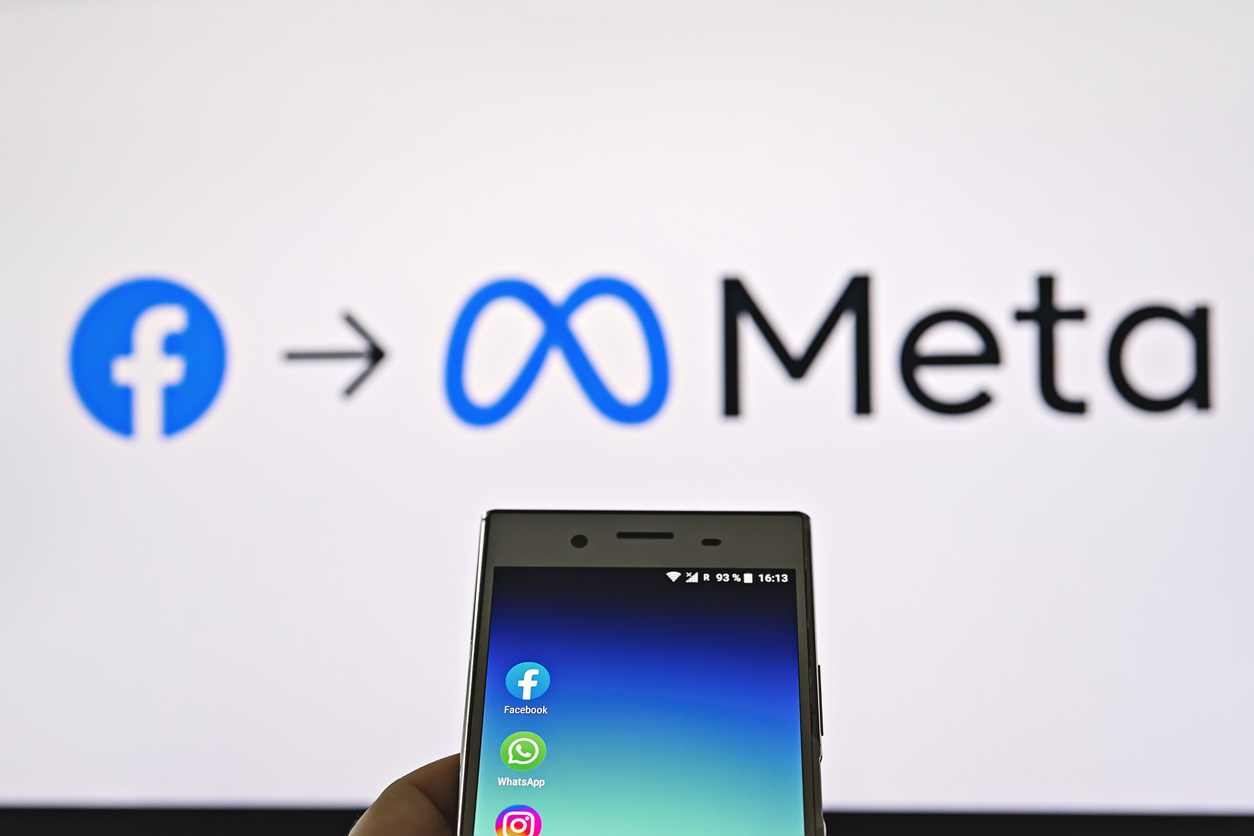
The State of Facebook Ads in 2022
It’s been virtually impossible for Facebook to stay out of the mainstream news.
With scandals, leadership changes, responses to Apple’s privacy updates, and plunging stock prices, Facebook’s had a heck of a few years.
Despite all the press, Facebook is still one of the top platforms advertisers have at their disposal. Facebook’s algorithm is getting sharper by the day, and the company is constantly rolling out new features to compete with TikTok.
But just because Facebook has all these bells and whistles doesn’t mean that the average advertiser knows about or takes advantage of them.
Book a 30 minute call
Reserve 30 minutes with a strategist and get 30 hours worth of value.
So in this article, I break down how we got to where we are with Facebook Ads in 2022 and share my thoughts on designing the best creative, leveraging the conversions API, using broad targeting, and cashing in on some major changes to Facebook coming down the pike.
4 changes that shaped Facebook Ads in the last decade
There’s a lot that’s changed about Facebook in the last 10 years, but these four have had the most significant impact:
- Facebook’s algorithm – Finding your ideal candidate in a broad pool of people was something you couldn’t do ten years ago. Facebook’s definitely taken huge strides in this department. But it also makes it even more essential for advertisers to know how to leverage the algorithm the right way in order to optimize for the right thing.
- Conversions API – While it goes by several different names, the conversions API has had a big impact on campaigns. Because now you’re not just trying to hit a front-end metric – you can optimize for a revenue goal or other lower-funnel business outcome.
- Dropping the 20% text rule – Eliminating the 20% text rule has changed how we think about creative in terms of what ads we use and how much we invest in them. We don’t have to heavily rely on photos or illustrations anymore.
- Cambridge Analytica – When the Cambridge Analytica scandal came out, all eyes turned to Facebook. And since legislators and regulators started breathing down Facebook’s neck, the company has made it harder for advertisers to get their ads approved, banned accounts more frequently, and limited the audiences they can target.
The new reality of Facebook Ads and iOS14.5+
In general, one of the biggest changes to the advertising world came last year when Apple pushed app tracking transparency (ATT). If you’re an iPhone user, you’ve probably noticed that when you open an app, you’re asked to opt into or out of tracking.
Unfortunately, Facebook, Instagram, TikTok, and virtually all social media apps relied on this iOS user data for targeting.
As a result of this update, Facebook advertisers now experience a considerable attribution delay一it can take up to 72 hours to report a conversion. This is an issue because many advertisers created automated rules that would pause a particular ad, ad set, or campaign based on the previous day’s performance.
On top of that, the attribution window shrunk from 28 days to 7 days. That’s concerning for companies with longer sales cycles.
For example, a high-end jewelry company may show an ad to someone who might be interested, but doesn’t necessarily purchase that day. In fact, it may take several weeks of multiple touchpoints via Facebook, Instagram, and email, to get the lead to convert.
If a lead makes a purchase after the 7-day window, it will not record in Facebook. So advertisers have to rely on Google Analytics and shopping cart data to tie everything back to what they’re seeing on the front-end of Facebook.
What kinds of creatives are working well on Facebook?
Creative will always be the number one make-or-break factor of any campaign. And right now, these are the things I see working well:
- Ads with great copy – Ads with a really clear, concise message force users to stop their scroll. Ads with more text explaining a direct offer work best for leads at the bottom of the funnel who are ready to buy.
- Movement, animation, and emojis – Remember, you’re competing with cute babies, cats, birthdays, and weddings. So your ads need stopping power. Using some element of movement, animation, or emojis can help.
- Using new formats – Any time there’s a new format introduced on the platform, it’s a good idea to explore it because that’s where the arbitrage opportunities lie. For instance, we’ve started running video survey ads where you can use the survey itself to segment, qualify, and build audiences for retargeting.
- Disqualification language – Some products are only suitable for a particular group of people, such as homeowners or people with good credit. Eliminating leads that don’t even qualify for your offering gets you closer to the right leads faster.
- Dynamic creative ads – Facebook has a newer feature where you can upload ten different images or versions of a headline, and the platform will mix and match them to fit personas you’re targeting.
How to get the most out of Facebook’s conversions API
iOS 14 has made using the conversions API (CAPI) a bit more difficult, but that doesn’t mean you still can’t get a lot out of it. Here are some questions I recommend asking yourself as you evaluate how you’re using Facebook’s conversions API:
- How long is the sales process? If your sales cycle is longer than seven days, you need to find a signal that is indicative of a high-quality lead. You’ll then use that signal to ping back to Facebook.
- When is the correct time to post data back to the platform? Let’s take a mortgage company, for example. A mortgage can take 60 days to close, so you should be looking for something to post back to Facebook much further up the funnel. A good time to post back might be if a prospect expressed interest within the first 48 hours of lead submission.
- Do you have enough data? If you don’t have a lot of phone calls or connections happening, there’s not much to base your conversions on. You want at least 50 conversions per week per ad set.
- How can you increase the likelihood of conversions? If you don’t have a lot of post-conversion touchpoints, there are still things you can do to boost conversions using a form, and firing the pixel depending leads’ answers to each question.
Use broad Facebook targeting to train the algorithm
Since 2019, we’ve lost many detailed targeting options, but you can still train the algorithm.
You want to fire a conversion for someone who’s very qualified so that Facebook can pick up on certain signals and then go find people to target based on the data points that they have internally.
To do that, we’ve used third-party lists. There are tons of different data providers that you can work with that will loan you data and have different models for how they charge. We’ve seen success with interest targeting and lookalikes, but not the same level of success as broad targeting.
We recommend beginning with the broadest relevant audiences first. You’ll still select some settings, but you should have roughly a million people in your campaign. Doing this forces Facebook to play in the whole wide audience, not just a small sliver of a broad audience.
ABO vs. CBO campaigns
We see more success with CBO (campaign budget optimization) campaigns than ABO (ad set budget optimization).
With CBO, budgets are controlled at the ad set level versus the campaign level. Facebook decides where to deploy that budget dynamically, depending on the data it has, so these tend to be more bang for your buck.
ABO makes sense if you have different audience segments that you absolutely must or want to serve. So I only run ABO campaigns when I’m working with smaller audiences that are clearly defined, and I’m careful to not burn any one of them out.
How to use Facebook Ads for B2B or highly regulated industries
I’ll start with housing employment credit, or HEC, which is any business involving real estate and lending (think: mortgage, credit card, personal loan companies).
In Q3 of 2019, Facebook published a new set of rules that disallow advertisers from targeting budget, age, or zip code. On the one hand, this is a good thing because it prevents discrimination, but there are some downsides, too.
Let’s say someone is dealing with a debt settlement. To qualify for debt settlement, you typically must have over $10,000 in debt. If I’m 18 years old, I probably don’t have $10,000 in credit card debt because I just got access to credit, so I want to disqualify those people. How do I do that?
Well, you can optimize for a higher self-reported debt amount on the form. When you look at your ad spend breakdown, you’ll see it trending toward an older demographic. At that point, you can figure out what other questions to ask that get you closer to your ideal candidate.
For B2B advertisers, I suggest using third-party lists to get a headstart on refining your campaigns. Once you have enough data, you can start to loosen things up. Deep Sync Labs is a good option for licensing third-party datasets. There’s also a tool called Clearbit, which allows you to create B2B Facebook audiences similar to how you would on LinkedIn.
New opportunities for Facebook Advertisers in 2022
Facebook is always coming out with new advancements to the platform. I tend to jump on those because they give your ads a boost. Here are a few I’m excited about:
- Reels – Facebook saw how popular TikTok became and is trying to duplicate it. Right now, they have low CPMs and high engagement.
- Optimize for two different objectives – I can’t share too much about this feature because it’s in a closed beta. But at the end of 2022, you should be able to focus on two objectives instead of one.
- User-generated content – People love engaging with influencers, so brands are beginning to repurpose influencer content as ads. We’re already seeing this happening on Instagram.
- New platforms and formats – Over the next few years, I think Facebook will start monetizing more of its assets. This means you’ll continue to see new ad formats and even new ad placements on other platforms like Facebook Messenger.
- Metaverse – Facebook is clearly going for a metaverse play. While that doesn’t exist yet, paying attention to ads in the metaverse can be valuable because they’ll be new, novel, and cheap.
Leaning into Facebook Ads in 2022
Facebook’s algorithm is its main attraction. While new releases can be tough to keep up with, taking advantage of new opportunities will catapult your go-to-market strategy.
The more you know about how the algorithm works, the more you can capitalize on your conversions. Feeding the machine the right data will help you attract the right leads at the right time, even in highly competitive markets or highly regulated industries.
So if you’re interested in learning more about Facebook and other modern digital advertising strategies, join us at the next Growth Clinic. We host sessions every Wednesday at 12pm EST.
And if your ad strategy needs a boost, book some one-on-one time with one of our WebMechanix experts.
Most newsletters suck...
So while we technically have to call this a daily newsletter so people know what it is, it's anything but.
You won't find any 'industry standards' or 'guru best practices' here - only the real stuff that actually moves the needle.







